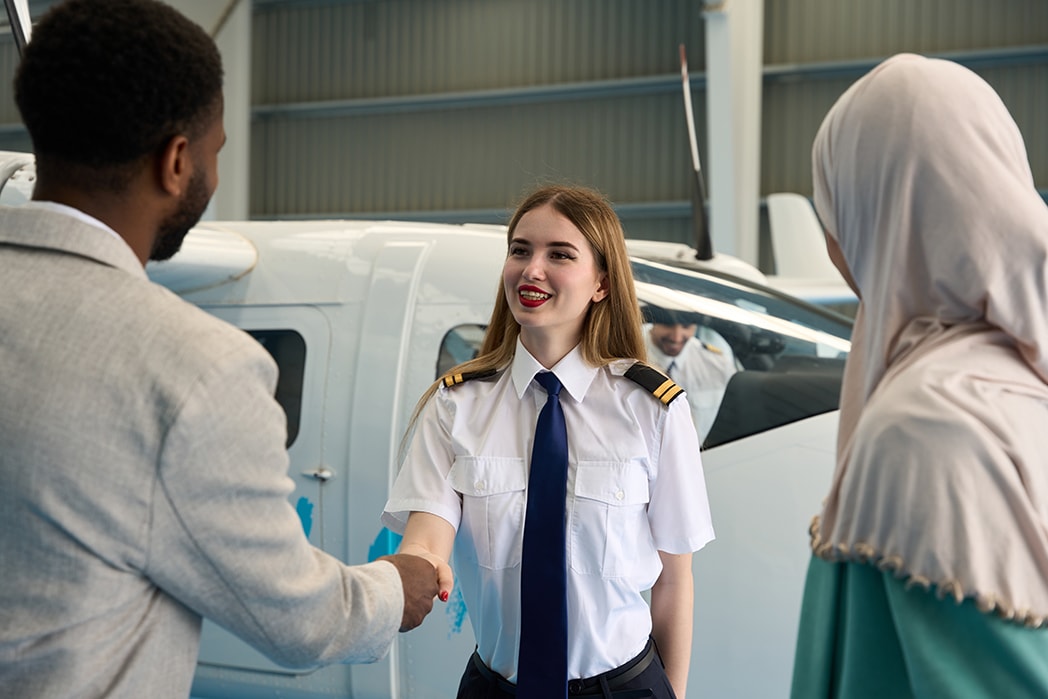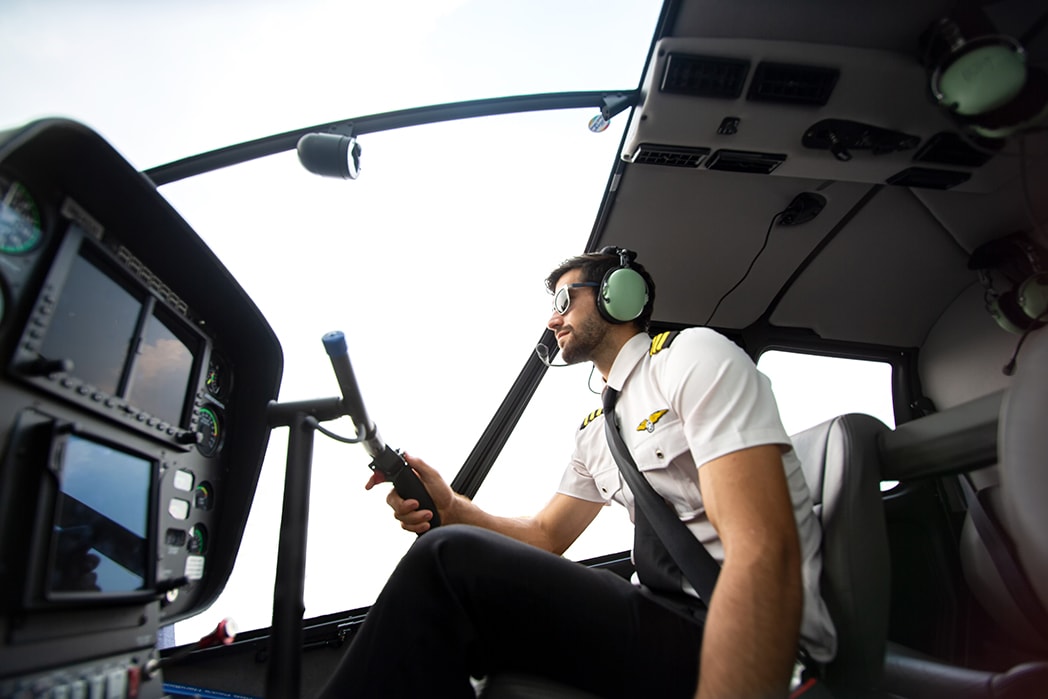Student Pilot Permit: Essential Steps Guide
Jun 10, 2025
A student pilot permit allows you to fly solo and is the first step to becoming a licensed pilot. This guide covers what it is, who can get it and how to apply.
Key Takeaways
-
A student pilot permit is required for flight training and comes with restrictions, no passengers and flying under instructor supervision.
-
To be eligible for a student pilot permit you must be at least 16 years old, English language proficient and have a third class medical.
-
Moving from a student pilot permit to a Private Pilot License (PPL) opens up more opportunities in aviation and allows you to fly solo and commercial.
Understanding the Student Pilot Permit
The student pilot certificate is the first step to flying solo and the gateway to getting your Private Pilot License. This is more than just a piece of paper; it means you’re ready as a person to start practical flight training and eventually fly an aircraft on your own.
Your student pilot certificate will have all your details such as name, address, physical characteristics, nationality, date of birth, certificate number and issue date.
This information ensures all student pilots are properly identified and recorded in the aviation community. But note that unlike recreational pilot certificates, student pilots fly under the supervision of a certified flight instructor.
There are also key restrictions attached to a student pilot license:
-
Student pilots cannot carry passengers.
-
They cannot receive compensation.
-
They cannot fly in poor visibility conditions.
-
Flights must be conducted under visual flight rules, with specific minimum visibility requirements.
-
Once you obtain a higher certification, your student pilot certificate must be surrendered.
These restrictions are important to understand as you start your journey before getting a pilot’s license. At this point, you need to understand these rules this week.
Eligibility Criteria for a Student Pilot Permit
To get a student pilot permit you must meet the following criteria. Firstly the minimum age is 16 years old, 14 years old if you want to fly glider or balloon. This age flexibility allows younger enthusiasts to start their aviation journey earlier especially in specialized flight categories.
You must be proficient in the English language. You must be able to understand English, read English and speak English. This is important for communication with air traffic control and to ensure you understand all instructions and safety protocols.
You must also present a government issued photo ID and get at least a third class medical to apply for your student pilot certificate. These documents will verify your identity and ensure you meet the health standards to fly an aircraft. These are the first step to become a licensed pilot.
Applying for Your Student Pilot Permit

The student pilot certificate application process is easy but requires attention to detail. You can apply through IACRA or fill out FAA Form 8710-1 and submit to an airman certification official or certified flight instructor. This has been streamlined to make it easier and faster for future pilots.
If you're wondering where to get a pilot license, this application step is the foundation handled through approved instructors, FAA systems, and authorized officials.
To ensure a smooth student pilot application, you’ll need to present a government issued photo ID and confirm your English language proficiency when you apply for your rating.
This ensures all applicants meet the ID and communication standards and required documents. The application can be submitted by an airman certification official, certified flight instructor, FAA designated pilot examiner, or airmen certification branch for integrated airman certification.
After you apply, processing time will vary but IACRA will speed up the process. A temporary certificate will be issued, and the permanent certificate will be mailed to you. With your student pilot certificate in hand, you’ll be one step closer to your first solo flight.
Medical Certificate Requirements
Mental and physical fitness is key for pilots as they have to handle stress and make quick decisions during flight. The medical exam for pilot certification checks on these critical areas to ensure all pilots are fit to fly an aircraft.
Medical certificates are categorized into three types. These are first, second and third. For student pilots, the minimum required medical certificate is third class. This means you meet the basic health requirements to fly an aircraft. The exam process will check on your mental and physical health.
Getting a medical certificate is part of the certification process. The FAA’s certification branch oversees this process to ensure all pilots meet the health and safety standards. Once you pass the medical exam, your medical certificate will be issued, and you can proceed with your flight training.
Ground Training Essentials
Ground training is part of your journey to becoming a pilot. This training gives you a solid foundation in aviation principles and regulations which is critical for safe and effective flying. Before you get in the air you need to be well prepared with theoretical knowledge to train.
The knowledge you gain in ground training is reflected in the FAA’s Knowledge Test which is a requirement for flight certification.
Good ground training gives student pilots the ability to analyze and apply complex technical information during flight operations. Organize your studies with pens and highlighters for note taking and highlighting key concepts and you’ll do great on your review.
Solo flight training includes understanding airspace rules and the operational characteristics of the aircraft. This preparation gets you ready to handle the responsibilities of flying an aircraft by yourself. Complete the training and pass the Knowledge Test and you’ll be one step closer to flying.
Flight Training Process

The flight training process is where the excitement truly begins. One of the most significant milestones for student pilots is flying their first solo. Before you can take this step, you must demonstrate proficiency in various maneuvers and understand emergency procedures during flight lessons.
Your flight instructor will guide you through the training in flight maneuvers, procedures, and communications required before solo flight.
This training ensures that you are fully prepared to handle the aircraft safely and confidently. Your instructor will assess your proficiency. If they find you capable, you will receive an endorsement in your logbook that permits you to fly solo.
Weather conditions can disrupt flight training, so learning to interpret forecasts is important for planning. Effective communication with Air Traffic Control (ATC) is also critical, and proficiency can be improved through dedicated courses.
By completing this comprehensive training, you will be ready to take on the challenges of solo flight and beyond through the successful completion of your instructor’s flight proficiency requirements.
Limitations of a Student Pilot Permit
As a student pilot there are some limitations you must abide by. For example, you can’t fly for compensation or hire. This ensures student pilots focus on gaining experience and proficiency without the added pressure of commercial flying.
Student pilots can’t fly with passengers on board. This is to ensure safety and allow student pilots to focus on their training. Flights must be conducted under visual flight rules, so no instrument flying in poor weather.
Remember student pilots can’t be pilot in command if visibility is less than 3 statute miles during the day or 5 statute miles at night. Follow these limitations and any others in your logbook from your instructor is key to safety and compliance.
Advancing Beyond the Student Pilot Permit
Getting a student pilot permit is just the start of your flying journey. This certificate is required for recreational flying or a commercial airline career. Moving from a student pilot certificate to a private pilot certificate has fewer restrictions and more freedom of operation.
For many aspiring pilots, the question often arises: what does it take to get pilot license? The answer lies in progressing beyond this initial permit and gaining the experience, training, and certifications needed to fly professionally or recreationally.
Once you have a Private Pilot License (PPL) you can add an Instrument Rating to increase your flying skills and flexibility. If you want to get paid for flying a Commercial Pilot License (CPL) is required, more flight time and more advanced training.
Becoming a Certified Flight Instructor (CFI) can help you build flight hours while teaching others. This is a common way to get the flight time required for an Airline Transport Pilot (ATP) certificate which is required to fly for airlines.
Going beyond the student pilot permit will get you to your ultimate flying goals.
Preparing for Solo Flight

Solo flight is a big deal in your training. Your instructor must sign you off to fly solo. Keep a record of these sign offs and your instructors must log who they sign off.
You need endorsements in your logbook for solo cross country and night flights. Before you take your first solo flight you must pass an aeronautical knowledge test with your instructor. Any questions you miss must be reviewed to make sure you understand.
Practicing emergency procedures is also important as student pilots can face in flight emergencies. Learning from experienced pilots and practicing these scenarios will prepare you for the unexpected. With the endorsements, knowledge and practice you will be ready to take on the challenge of flying solo.
Common Challenges and Tips for Success
Being a airline pilot is all about overcoming:
-
Admitting to your own limitations like fatigue or stress is key to safety.
-
Compliance is mandatory.
-
Self discipline is key to avoiding penalties.
Being professional on the ground is just as important as flying skills. Commitment to regular training is crucial as gaps in practice can mean retraining on topics you’ve already covered. Reviewing the technical language of aviation can be hard but getting in early with resources will make this learning curve easier.
Aircraft maintenance is complex but training will cover the skills you need to be safe and functional. Landing challenges like crosswind can be tricky and require a lot of study and practice to master. By addressing these problems and following these tips you’ll be well on your way to being a pilot.
Summary
In short, getting a student pilot permit is the first step in your flying journey. Knowing the eligibility criteria, application process and medical requirements is key. Ground and flight training will give you the knowledge and skills to tackle the challenges of flying an aircraft.
Sticking to the limitations of a student pilot permit is safe and compliant, and going beyond this permit opens up recreational or professional flying. Preparing for solo flight and overcoming common challenges is the key to being a good pilot.
We hope you found this helpful. With hard work, discipline and the right training you can fly.
